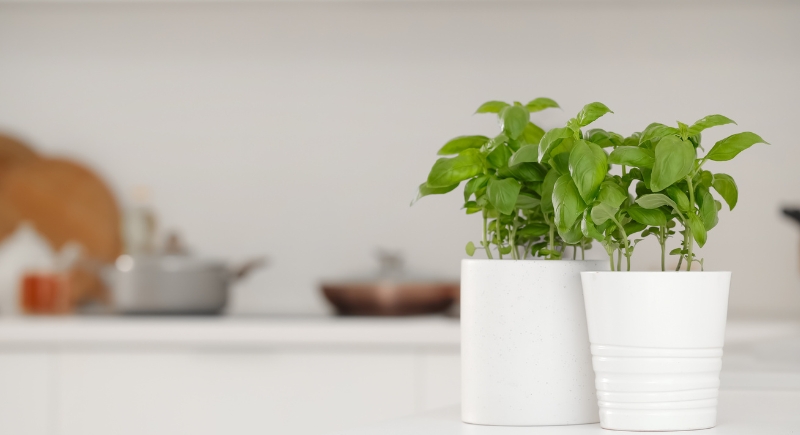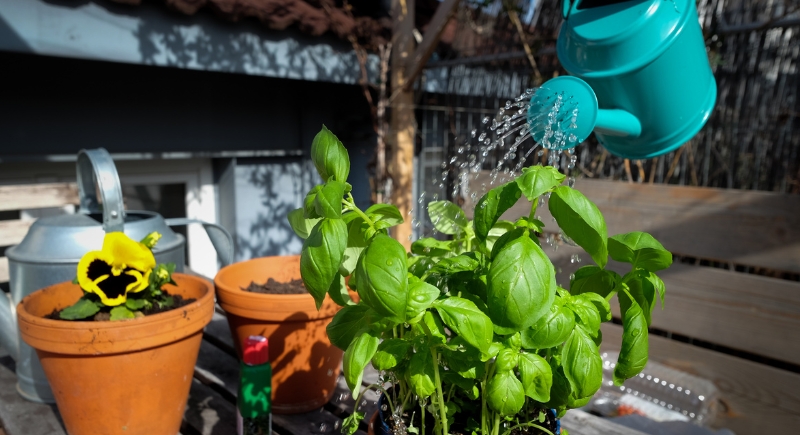I Finally Figured Out the Secret to Keeping a Store-Bought Basil Plant Alive
Most basil plants sold in supermarkets begin to deteriorate within a week. They arrive looking full and healthy, but the leaves soon wilt, turn yellow, and fall off. This common failure isn’t caused by poor care.
The problem starts with how these plants are produced and packaged. But don’t lose hope because with the right approach, store-bought basil can survive for months and continue producing healthy, flavorful leaves.
It’s Many Plants in One Pot

Image via Canva/Pixelshot
Most basil pots sold in supermarkets are misleadingly full. What looks like one healthy plant is actually a cluster of 20 to 30 seedlings jammed into a single container. Growers do this to create a lush, marketable appearance that catches attention in the produce aisle. The problem starts once you take it home. Those crowded roots compete for space, water, and light, and the whole thing begins to decline.
The roots form a dense, compact mass with no space to expand. Each seedling competes for the same small amount of water, nutrients, and light. Because none of them has enough room to grow properly, the entire plant begins to fail. Leaves droop, stems weaken, and the roots start to suffocate. This isn’t a matter of poor care but of unrealistic growing conditions.
These basil plants are grown as temporary products, not lasting herbs. To give them a real chance, they must be treated like seedlings, not mature plants. The first step is understanding that what looks like one basil plant is actually several fighting to survive.
The Real Fix: Divide and Repot
The only way to give supermarket basil a longer life is to separate the seedlings and repot them individually. Begin by gently removing the entire plant from its plastic container. The roots will likely be tangled and compact, which is why you should use your hands to carefully pull apart the root ball. Some roots may tear, which is expected and won’t harm the plant. Focus on keeping the healthiest stems with strong roots and sturdy leaves, and discard the weaker or underdeveloped stems.
At the end of the day, each surviving seedling should go into its own pot, ideally the same size as the original container but with fresh, well-draining soil. For indoor use, a mix of coconut coir and perlite helps keep the roots aerated and free from excess moisture. Just make sure that every pot also has drainage holes. Once planted, water every single one thoroughly to ensure the roots settle into the new environment. Separating the seedlings gives each one access to space, nutrients, and water without competition, setting them up to thrive individually.
Watering The Right Way

Image via Getty Images/Super Buro
Watering basil correctly is key to keeping it alive. After repotting, a few days of top watering help the soil settle. But ongoing care should rely on bottom watering. Place individual pots on a saucer or shallow dish and fill them with water. This allows the soil to draw moisture upward by delivering water directly to the roots while keeping the leaves and upper soil dry.
Keep in mind that wet leaves encourage rot and pests, while soggy soil from top watering can cause fungus and root damage. Bottom watering creates consistent moisture without oversaturation. The soil absorbs only what it needs, which prevents overwatering and supports healthy root development. Check the saucer daily and refill when empty.
During warmer months or in brighter rooms, basil may need more frequent refills. With steady bottom watering, the plant will develop stronger stems, more vibrant leaves, and visible growth. This simple change in watering technique often makes the difference between a basil plant that declines and one that flourishes.